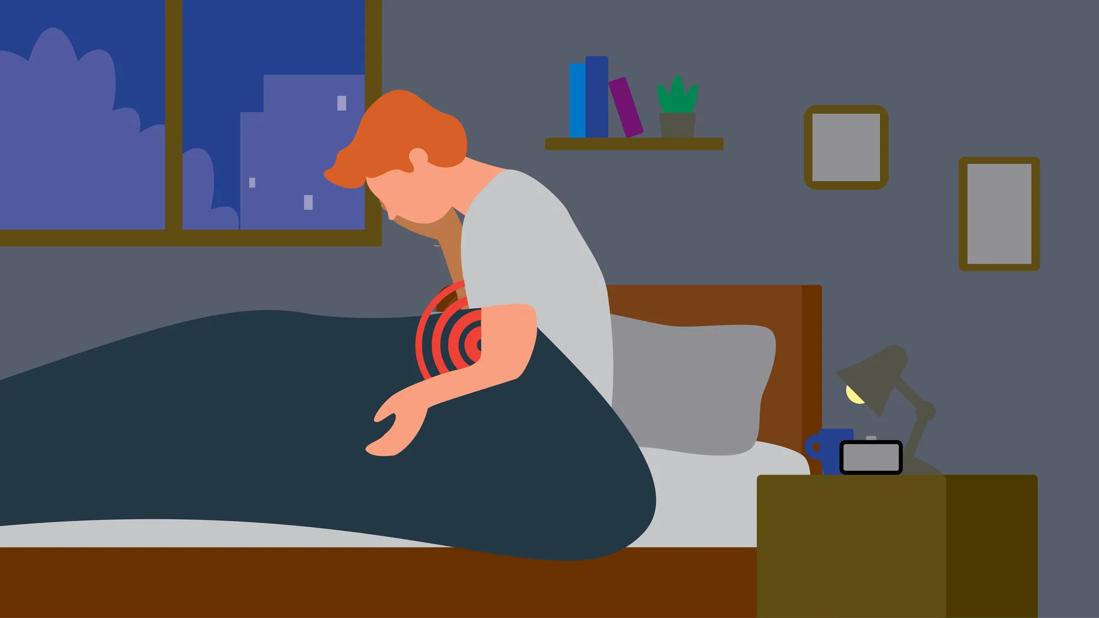A ‘gallbladder attack’ often happens after eating, and the pain can wake you from sleep

There’s a lot going on in your body between your chest and your pelvis. So, when abdominal pain strikes, it can be nearly impossible to tell where it’s coming from.
Advertisement
Cleveland Clinic is a non-profit academic medical center. Advertising on our site helps support our mission. We do not endorse non-Cleveland Clinic products or services. Policy
If you’re feeling pain in the right upper part of your stomach, you may wonder if your gallbladder is to blame. This tiny, pear-shaped organ sits under your liver on the right side of your abdomen.
It’s a fairly common cause of upper abdominal pain after all, with around 200,000 cases a year in the United States. But it’s not the only potential cause.
Are there certain clues that suggest you might be dealing with an issue like gallstones? Gastroenterologist Christine Lee, MD, explains how this organ works, plus some classic symptoms of a gallbladder attack.
Your gallbladder is a small organ that stores bile. Bile, while is produced by your liver, helps break down fats. When you eat a meal, your gallbladder gets to work squeezing some of that stored bile into the intestine to help with digestion.
But if bile contains too much of one or more of its components, it can harden or precipitate into pebble-like pieces called gallstones (cholelithiasis).
“Most people that have gallstones are unaware that they have gallstones,” Dr. Lee shares. “As long as they stay within the confines of the gallbladder, gallstones generally don’t cause any symptoms.”
But gallstones become problematic if they start to block bile from exiting the gallbladder or if they slip out of the gallbladder and cause a blockage in your biliary system. Blockages can create a buildup of pressure in your gallbladder, which causes pain called cholecystitis — more commonly known as a “gallbladder attack.”
Advertisement
Gallbladder pain is usually felt in your upper right abdomen, but you may also feel it right in the middle of the chest or abdomen. A number of issues — including heartburn, a peptic ulcer or even a heart attack — can cause pain in that area, which can make it difficult to determine when the gallbladder is the source of your pain.
But Dr. Lee says certain signs may indicate you’re dealing with a gallbladder issue, including:
Dr. Lee adds that gallstones can cause other digestive symptoms, too, like fever, nausea and vomiting — or you may experience these symptoms but not have any pain. After all, everybody (and every body) is different.
“The way that all these symptoms present varies from person to person,” she says. “You may have all of these symptoms or a uniquely different set of symptoms.”
If you experience pain that you think might be related to your gallbladder, don’t jump to conclusions too quickly. Other gallbladder diseases can cause similar symptoms, and conditions like kidney stones and pancreatitis can bring similar symptoms, too.
In general, abdominal pain can have many causes, so it’s important to tread carefully. Seek emergency care if your pain gets worse, becomes severe or is accompanied by sweating, shortness of breath, fevers, or bloody vomit or stool.
Although gallbladder attacks generally don’t last long, they can recur with complications.
“Cholecystitis generally doesn’t go away on its own,” Dr. Lee states. If you suspect you’re experiencing gallbladder attacks, see a gastroenterologist to help you get to the bottom of it.
It can be helpful to keep a record of when and where your symptoms occur so that when your healthcare provider takes your medical history, you can share this information with them to help them better understand what you’ve been experiencing. If your doctor suspects gallstones as the culprit, they may order tests for confirmation.
Advertisement
At this time, there are no medications that can effectively treat gallstones, so the treatment is typically gallbladder removal surgery (cholecystectomy). While that might sound like a dramatic step, the reality is that you don’t actually need your gallbladder to live a happy, healthy life.
Your liver can release bile directly into your intestines to help with digestion. And your gallbladder can (most of the time) be removed laparoscopically — a minimally invasive procedure done by making small cuts in your belly, usually less than half an inch long in three different places.
“Your gallbladder is not essential for life,” Dr. Lee clarifies. “The gallbladder, thankfully, is not a vital organ. It’s more of a luxury than a necessity.”
Advertisement
Learn more about our editorial process.
Advertisement

Nausea, fullness, heartburn and unexplained weight loss may signal that something is going on with your GI system

Peppermint oil, exercise and a belly massage can help, but for ongoing symptoms, you may need to talk to a healthcare provider

Prioritizing nutrition and physical activity are key to staying strong and energized

Your relationships with food, physical fitness, social interactions and advance planning desires may need to be modified

Opt for soft foods or liquids that are rich in protein, calories and vitamins

Stomach cancer tends to spread to the lymphatic system and liver before moving to other areas

Delivered through an IV, options can include chemotherapy, immunotherapy or targeted therapy, or a combination

A small percentage of gastric cancer is genetic

Babies can get congested easily, but you can calm their cough by keeping them hydrated, using nasal drops and running a humidifier

Weight loss may cause loose, sagging skin and muscle loss to your rear

Several conditions, like vitiligo and fungal infection, can cause a loss of pigmentation, leading to white spots or patches on your skin